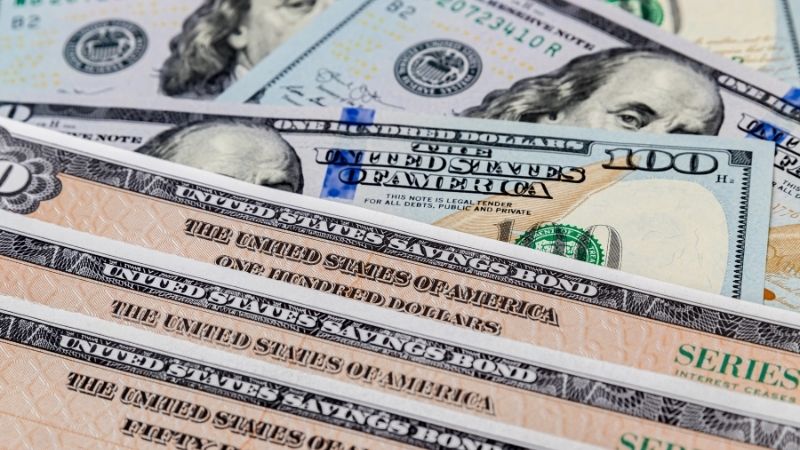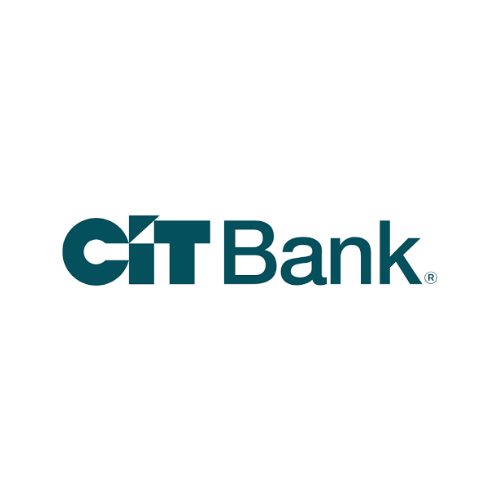10 Best Short Term Investments
Some products in this article are from our partners. Read our Advertiser Discloser.
If you’re looking to maximize your investment profits in a minimal amount of time, you might want to consider investing in some of the best short term investments. Not everyone likes keeping their money locked up for long periods.
It might be acceptable to you to invest in some long term investments, say, for your 401k or IRAs. However, you may want to think about investing some of your cash in short term investments.
Here are some of our favorite short term investments you might want to consider adding to your investment portfolio.
Top Short Term Investments
A list of the best short term investments includes investments that have a variety of risk levels. Your risk tolerance level can help you determine which of these short term investment options you prefer.
1. Exchange Traded Funds (ETFs)
Exchange Traded Funds, often called ETFs, are similar to mutual funds. ETFs are sort of like baskets of securities such as stocks, and they are often designed to track an underlying index, such as the S&P 500.
One big difference between an ETF and a mutual fund is that ETFs are listed on stock exchanges, and shares can be traded throughout the day.
ETFs can hold stocks, bonds, commodities or a mixture of those types of investments. You can purchase shares in an ETF based on your risk tolerance level.
For instance, if you have a lower risk tolerance level, you might consider purchasing shares in an ETF that holds a lot of blue-chip stocks, such as Coca Cola or McDonald’s.
And if you invest with a company like Betterment, you can invest as little as you like. There’s no minimum balance with Betterment’s Digital membership.
When purchasing ETF shares, be sure the investment company you’re working with will let you withdraw when you want. This is the case with Betterment. Other cash management accounts like Robinhood allow you to choose and manage ETFs as well as stocks.
Why we like it: Potential for low minimum investment, more diversification than single stocks
2. Floating Rate Funds
Floating rate funds are bond investments but with a variable interest rate. With the funds invested, banks lend the money to companies that otherwise wouldn’t qualify for traditional financing. This makes the investments riskier for investors but may have a higher yield.
The interest rates paid on floating funds vary with the prime rate. The interest investors receive is a combination of the Federal funds rate and a predetermined spread. The spread depends on the risk the company poses. Companies with higher default risk will pay investors a higher interest rate, while companies that aren’t as risky may yield a lower rate for investors.
Floating rate funds can be riskier for borrowers, but the potential for higher yield is a draw. The price stability of the funds, however, is another positive. The value of the asset behind the funds usually doesn’t change, which means the funds’ price doesn’t often change either.
Why we like it: They can be a great way to diversify a portfolio, but only with a small percentage of the total capital to avoid a serious loss.
3. High Yield Savings Accounts
High yield savings accounts and money market accounts pay quite a bit more in interest than traditional savings accounts. In this day and age, you’ll be hard-pressed to find a traditional savings account that pays much more than 0.05 percent interest.
However, companies such as CIT Bank‘s Savings Connect account pay a competitive 4.05% interest or more. To put this in a numbers perspective, let’s say you’ve got $10,000 in your savings account.
With a traditional savings account interest rate, you’d earn $5.00 in the first year on that money. In contrast, with a high yield savings account, you’d receive $75 or more in the first year on that money.
While the $70 a year difference isn’t life-changing money, it can add up. And it’s still a plush extra benefit for a virtually risk-free investment. On top of that, most accounts are FDIC insured up to $250,000 per person.
In other words, the government ensures the balance has protection in the event of bank failure. That means your chances of losing money on these savings account are next to nothing.
Why we like it: Low minimum to start, low risk as it is FDIC insured
4. Certificates of Deposits
As with savings accounts, banks aren’t paying out huge interest on CDs. However, they are paying more than traditional savings accounts do.
Certificates of Deposit have fair rates, but you’ll really find the most profit in bank CD specials. CD specials are term and rate specials that are higher than traditional CD rates. And the terms are usually for a year or less.
CD’s at banks often pay interest rates close to or above that of savings accounts.
Most Certificates of Deposit are usually FDIC insured. Of course, you’ll want to check with the institution you’re considering investing in a CD with to make sure they’re FDIC insured.
If you don’t mind having your money locked up for three to twelve months or more, you might want to consider investing in a CD.
Why we like it: short term maturity date, affordable minimum investment, low risk
Related Article: How To Invest with $10,000
5. Automated Investing
Automated investing means you use a robo-advisor to do the work of choosing the companies you invest in. You let the robo-advisor know about you, your investment goals and your risk tolerance preferences.
Then the robo-investor uses that information to select the right investments for you. This is how M1 Finance works.
With companies like M1 Finance, you can open a taxable investment account or an IRA. They’ll help you buy what they call “pies,” slices of investments that fit your investment goals.
These “slices” are pieces of stock shares or ETF shares that you can get at an affordable price. You can choose what the slices consist of on your own, or use M1 Finance’s “expert pie” slices.
The “expert pie” slices are pre-mixed investments professionally designed and chosen based on your risk tolerance and other factors.
There’s no minimum balance requirement, and you can begin investing once your M1 Finance account balance reaches $100. And M1 Finance doesn’t charge broker fees or commissions.
What we like: low minimum investment, ability to purchase pre-mixed slices or create your own, no fees
6. Money Market Accounts
A money market account is kind of like a hybrid savings and checking account. It has some savings account features but typically gives you the ability to write a few checks from it each month too.
Many banks pay higher interest rates on money market accounts, close to what you’d earn on a high yield savings account. There are no terms on money market accounts, and often low or no minimum balance requirements.
These features make a money market account, or money market mutual funds, a good potential short term investment. Most money market accounts at reputable banks are FDIC insured, but, of course, check with the bank you’re looking into.
Why we like it: checking and savings capabilities, low minimum investment, attractive interest rate
7. Treasury Securities

Treasury securities have long been held as a low-risk short term investment. They come in three forms: T-Bills, T-Notes and T-Bonds. T-Bonds are long-term investments of 30 years.
However, T-Bills have terms ranging from 4 weeks to 52 weeks. And T-Notes have terms ranging from 1 year to 10 years.
Treasury securities are government-backed investments. They’re issued to finance government spending as an alternative to taxation.
From Wikipedia:
Treasury securities are backed by the full faith and credit of the United States, meaning that the government promises to raise money by any legally available means to repay them. Although the United States is a sovereign power and may default without recourse, its strong record of repayment has given Treasury securities a reputation as one of the world’s lowest-risk investments.
Investment experts have long considered treasury securities as one of the best lower-risk short term investments. T-Notes and T-Bills come in increments of $1,000.
Note that T-Bill interest rates are typically much lower than T-Note interest rates. Also, some tax benefits come with investing in treasuries you might enjoy. Talk with your tax accountant for more details.
What we like: low minimum investment, low risk, long history of stability
8. Peer-to-Peer Lending
Peer-to-peer lending is one of the higher risk investments we’re sharing today–sometimes. When you invest in peer-to-peer lending companies, you can earn interest via crowdfunded lending.
Peer to peer lending has several categories of loans that you can choose to invest in, from low risk to high risk. All of the borrower and loan details are shared before you select your investment.
You can choose to invest in a 36-month maturity investment or a 60-month maturity investment. Loans in the A-grade category are the lowest risk. Loans in the F-grade category are the highest risk.
Of course, the returns on the lower grade loans will be higher, and the returns on the higher grade loans will be lower.
What we like: variety of risk levels to choose from, low minimum investment
9. Short-Term Municipal Bonds
A municipal bond is debt security held by a city, county or other government entity. They’re typically used to finance capital projects such as building schools or making other city or county improvements.
The two most common types of municipal bonds are general obligation bonds and revenue bonds. As with T-bills and T-notes, General obligation municipal bonds are backed by the “full faith and credit” of the issuing government entity.
Revenue bonds are different. Whereas a government’s taxing power backs general obligation bonds, revenue bonds are backed by a specific project or source.
Therefore, general obligation bonds are the lower-risk investment of the two. The minimum investment for a municipal bond is typically $5,000.
With municipal bonds, the interest is typically paid out in bi-annual installments. Your principal investment is then returned at the end of the term. Notably, the installment payments could make municipal bonds a good source of passive income.
What we like: lower risk, long history of stability
10. Short-Term Corporate Bond Funds
Short-term corporate bond funds likely constitute one of the highest risk investments we’ll talk about here. Corporate bonds are sold to investors to raise money for corporations.
As with treasuries, interest on corporate bonds is paid out in installments, and the initial investment balance is returned at bond maturity.
A bond fund, on the other hand, is similar to a mutual stock fund. A bond fund invests in a mix of short and long term corporate bonds.
Corporate bond funds typically involve higher risk, and therefore usually pay out a higher return as well. In other words, corporate bond funds may not be smart investment choices for the risk-averted investor.
However, it’s important to note that there are high-quality corporate bond funds that involve lower risk. Conversely, lower quality corporate bond funds will involve higher risk.
Beware of “junk bonds,” which are corporate bonds that, although the interest rate payout is much higher, so is the risk level.
Rating agencies such as Moody’s have a rating system for corporate bond funds that can help you gain a clearer picture of the risk involved in investing in a corporate bond fund.
What we like: higher pay out, variability of risk.
What is a Short Term Investment?
Everyone likely has their definition of what constitutes a short term investment. However, a short term investment is typically any investment with a term of fewer than five years.
However, this definition also acknowledges that many short term investments have a holding period of just three to twelve months. Your job is to decide, based on your situation, how short or long you want to invest your short-term investment.
Be sure you’re clear on the term of any investment before you lay your money on the table.
How to Choose a Short Term Investment
The definition of the “right type” of short term investment is different for everyone. There are three main factors you need to know about any investment before putting your money in that investment.
Know the Details
Before you place money in an investment, it’s essential to know the investment details. Precisely what are you investing in? What is the risk level of the investment?
What are the fees or terms involved with the short term investment? Can you get your money out early? If so, what will it cost you to do that?
In what instances can the original value of your investment go down? How much can it go down?
What factors influence my investment return? What factors influence a potential loss on my investment? These are all questions you’ll want the answers to before choosing to put your money in an investment.
Not knowing the details of an investment can result in unhappy outcomes, such as an investment being locked in for longer than expected. Or a loss on the principal amount of your investment.
Know Your Risk Tolerance For The Short Term
Risk tolerance is the degree of fluctuation in investment returns and your ability to tolerate those fluctuations, especially in the short term.
For example, a person with high-risk tolerance isn’t as phased by large swings in investments. Conversely, a person with low-risk tolerance doesn’t handle large fluctuations in investments as well.
Depending on your age, you’ll likely want your investment portfolio to include a variety of low-risk and high-risk investments.
Knowing your risk tolerance level can help you choose the investments that are best for you in a smarter manner.
Know Your Timeline
The third thing you need to know before investing in any investment is your timeline. Do you have a timeframe for when you might need the money you’re about to invest? Understanding your timeframe will help you prioritize your cash management account.
And will the investment you choose work within that timeline? If not, what penalties will you pay if you have to withdraw the money early? You don’t want to lose money due to early withdraw. Also, can you withdraw the investment early?
Some types of investments don’t allow early withdrawal of principal balance. Know your timeframe regarding when you may or will need the money you’re investing.
Work to invest in the types of investments that will mature before you need the money. Or with timelines that fall into your comfort zone. This way you know which investment to choose; from a simple savings account, money market account, stock market, government bonds, and more. The options are endless.
Frequently Asked Questions
Check out these frequently asked questions regarding short-term investments to learn more.
Can I Invest for Just Three Months?
Short term investments can be for any length of time, some as short as a month or two. Safe short-term investments are usually investments at an FDIC-insured bank, including accounts such as CDs, but there are plenty of short-term investment options with higher yields, too.
Is a Short Term Investment Risky?
Any investment has a layer of risk, but short term investments can be riskier because there isn’t any time to compensate for a loss. So do your due diligence before putting your money in investments not protected from loss, like a savings account or CD.
What Non Short Term Investment Is Best?
Short term investments are good for immediate goals or those you want to achieve in the next five years. However, long-term goals, like retirement, do best in tax-advantaged accounts such as a 401K or IRA.
Is Paying Off Debt an Investment?
It might not seem like paying off debt is an investment, but it’s one of the best investments you can make. Essentially, you’re investing in yourself because you’re getting out of debt and have more money to invest.
Unfortunately, most short term and even long-term investments don’t make nearly high enough returns to outdo consumers’ interest charges on credit cards and other personal debt.
Summary
The best short-term investments help you find a balance between earning interest and staying within your risk tolerance parameters. For you, that might be as simple as putting your money into money market accounts or ETFs.
Or as complex as investing in peer-to-peer lending or municipal bonds. It’s up to you to find the right short term investments for your investment portfolio.




